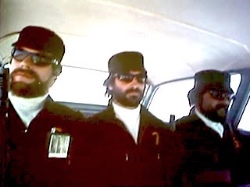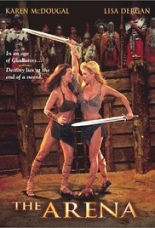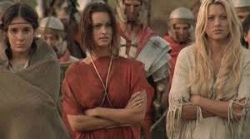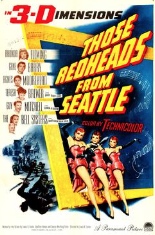
 Hubba-hubba! The carpetbaggers match the drapes when Agnes Moorehead takes her four single and ready to mingle (mostly) carrot-topped daughters (Rhonda Fleming, Teresa Brewer, Cynthia Bell, Kay Bell) from the titular city of Seattle to Gold Rush-era Alaska for some snowbound romance and minor Klondike mystery-solving, as the gals try to find their newspaper publisher father’s murderer whilst pitchin’ woo with the fool’s gold worth of lonely prospectors that permeate the Arctic climate.
Hubba-hubba! The carpetbaggers match the drapes when Agnes Moorehead takes her four single and ready to mingle (mostly) carrot-topped daughters (Rhonda Fleming, Teresa Brewer, Cynthia Bell, Kay Bell) from the titular city of Seattle to Gold Rush-era Alaska for some snowbound romance and minor Klondike mystery-solving, as the gals try to find their newspaper publisher father’s murderer whilst pitchin’ woo with the fool’s gold worth of lonely prospectors that permeate the Arctic climate.
In between the absolute roster of wonderfully misplaced musical numbers by the likes of Hoagy Carmichael, Johnny Mercer and Ray Evans, these flame-maned fillies are a vivacious trio of backtalkin’ spitfires that are always sampling scandalous cosmetics like “rouge” and high-kickin’ them glammy gams to tunes that uses words like “Alabammy” and “honeylamb,” with momentarily blonde sister (and all-around pesky tomboy) Nellie the constant brunt of gender-fluid ribbings because, even at 12 years old, she’s not a hot-to-trot redhead ready for marriage like her flame-retardant hermanas.
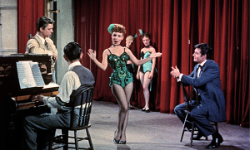 Mother Moorehead, years away from her role as the shrewish Endora on TV’s Bewitched, tries to keep a tight leash on the foursome, but those 1950s-era hormones are running wild and free in 1900s Yukon Territory. With a liberal amount of ankle skin and hand-holdings, all gloriously filmed in 3-D, you actually feel like you’re right there in the parlor, courtin’ one of those interchangeably gorgeous sisters to a badly timed and ill-fitting Jerry Livingston and Mack David tune! If only IMAX had been around then …
Mother Moorehead, years away from her role as the shrewish Endora on TV’s Bewitched, tries to keep a tight leash on the foursome, but those 1950s-era hormones are running wild and free in 1900s Yukon Territory. With a liberal amount of ankle skin and hand-holdings, all gloriously filmed in 3-D, you actually feel like you’re right there in the parlor, courtin’ one of those interchangeably gorgeous sisters to a badly timed and ill-fitting Jerry Livingston and Mack David tune! If only IMAX had been around then …
At 90 minutes, director Lewis R. Foster’s effervescently buoyant Those Redheads from Seattle is a fun Technicolor throwback where two-fisted men engaged in fisticuffs over the ownership of women in general, and these dames not only like it, they fall madly in love with the big galoots and/or palookas because of it, with a finale full of comically ribald weddings to back it up. If we walk away from Seattle with any lessons learned, it’s that gentleman might prefer blondes, but everyone loves a redhead. —Louis Fowler

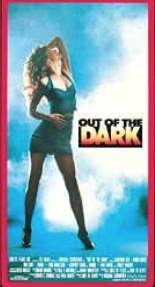
 As if a serial-killer thriller in which the targets are phone-sex workers weren’t ludicrous enough,
As if a serial-killer thriller in which the targets are phone-sex workers weren’t ludicrous enough, 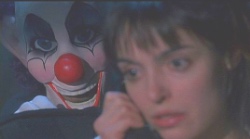
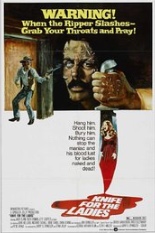
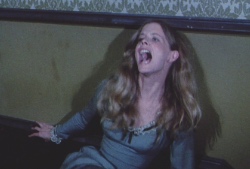
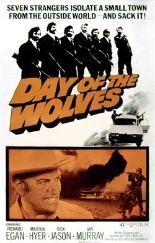
 Seven criminals are recruited to pull a job. They are known to one another only by an elementary code and sport the same cool-guy disguise.
Seven criminals are recruited to pull a job. They are known to one another only by an elementary code and sport the same cool-guy disguise. 